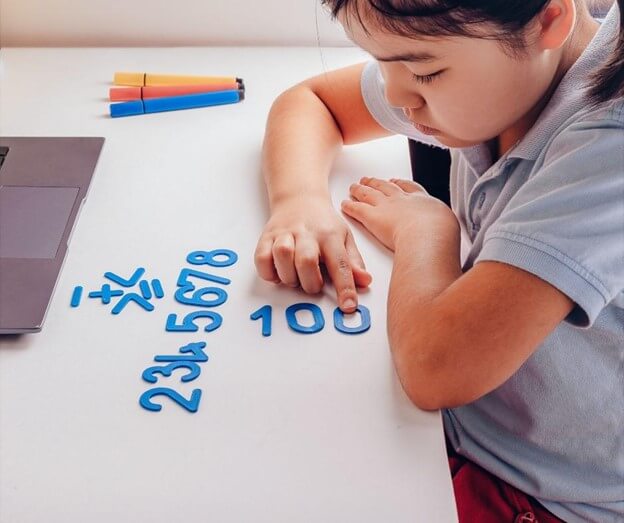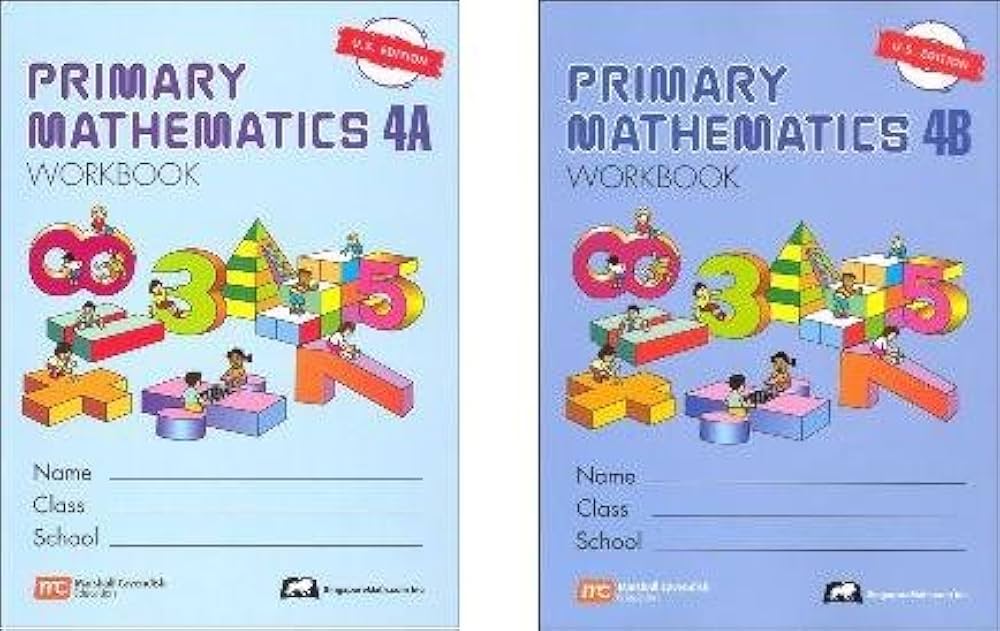Understanding everyday struggles in primary math and how to manage them effectively
Introducing the very best Shortcuts for Resolving Math Troubles Promptly
In the domain name of maths, effectiveness is vital. Mastering faster ways can transform the method individuals approach problems. From leveraging the distributive residential property to using fast multiplication techniques, these approaches boost both rate and accuracy. Furthermore, identifying patterns streamlines intricate calculations. As one explores these approaches, they may reveal unusual insights that can transform their mathematical experience. What are one of the most effective techniques that can be easily incorporated into everyday method?
Mastering Mental Mathematics Techniques
Just how can one improve their estimation speed without depending on calculators? Mastering psychological math methods offers a practical option. By employing approaches such as damaging numbers right into smaller sized, manageable components, people can simplify complicated calculations. When adding two-digit numbers, rounding each number to the nearby 10 can make psychological enhancement much easier before changing back to the initial worths.
Another effective method is to practice multiplication tables completely, allowing fast recall of items (struggles in primary math). In addition, recognizing patterns in numbers can facilitate faster calculations, such as utilizing the properties of even and odd numbers. Regular practice through problems and video games can better improve these abilities, making mental math more instinctive
Inevitably, growing self-confidence in one's math capabilities permits for quicker decision-making and improves general mathematical proficiency. By including these techniques, any person can greatly boost their estimation rate.
Making Use Of the Distributive Residential Property
The Distributive Residential or commercial property is an essential concept in mathematics that simplifies computations by enabling multiplication throughout addition or reduction. It is necessary for students to grasp its application via sensible examples, which can enhance their problem-solving abilities. Furthermore, recognizing usual errors can even more strengthen their understanding and protect against errors in future calculations.
Comprehending the Distributive Residential Property
Understanding the distributive building can greatly streamline mathematical computations. This fundamental property states that when increasing a single term by an amount or difference, one can disperse the multiplication throughout each term within the parentheses. In the expression a(b + c), one can revise it as ab + air conditioner. This technique not just streamlines estimations but additionally improves understanding of exactly how numbers connect (struggles in primary math). The distributive residential property is particularly valuable in algebra, where it aids in simplifying expressions and solving equations. Additionally, it lays the groundwork for extra complicated ideas, such as factoring and polynomial operations. By understanding the distributive residential or commercial property, pupils can develop a solid structure for dealing with a wide variety of mathematical difficulties effectively
Practical Instances Illustrated
Why is it important to apply the distributive home in practical scenarios? The distributive property enables people to simplify intricate estimations, making problem-solving much more effective. When computing the complete cost of numerous things, one can utilize the expression 5(2 + 3) to locate the total cost of 5 things priced at $2 and $3. By distributing, the calculation becomes 5 × 2 + 5 × 3, yielding a quicker result of $25. Another instance is in algebra, where simplifying expressions like 3(x + 4) can be achieved with distribution, resulting in 3x + 12. Such applications show the performance of this property in different real-world circumstances, boosting both rate and precision in mathematical problem-solving.
Typical Mistakes to Stay Clear Of
Although the distributive residential or commercial property is an effective device in maths, common mistakes can result in inaccurate outcomes. One constant mistake takes place when trainees forget to distribute the coefficient to each term within parentheses. In the expression 3(x + 4), falling short to use the building correctly can lead to leaving out the reproduction, yielding a wrong solution. One more mistake includes defalcating the building by including rather than increasing, especially when adverse indicators are entailed. Furthermore, trainees might overlook to streamline the outcome, which can obscure errors made throughout circulation. Acknowledging and staying clear of these mistakes can enhance analytical performance and accuracy when using the distributive residential or commercial property in numerous mathematical contexts.
Quick Multiplication Shortcuts
In the domain name of fast reproduction shortcuts, methods like increasing by powers of 10 and the increasing and halving technique stick out. These approaches can significantly streamline estimations, making them a lot more easily accessible. Understanding these shortcuts can boost efficiency in mathematical analytical.
Multiplying by Powers of 10
When increasing by powers of 10, the click to investigate procedure ends up being extremely straightforward, as the procedure mainly involves changing the decimal point. Multiplying a number by 10 requires relocating the decimal one location to the right, while multiplying by 100 demands a change of two locations. This simplicity reaches bigger powers, where each extra no suggests another decimal change. For instance, increasing 5.6 by 1,000 lead to 5,600. This technique considerably boosts speed and accuracy, as individuals can rapidly imagine the result without intricate calculations. Such efficiency is especially helpful in psychological math or when time is restricted, allowing for quick analytical in numerous mathematical contexts. Grasping this method is crucial for anybody intending to improve their math abilities.
Doubling and Cutting In Half Approach
The Increasing and Cutting in half Approach supplies an efficient approach for fast multiplication, specifically when taking care of even numbers. This technique includes transforming a reproduction issue into a simpler kind by either doubling one of the numbers and cutting in half the other. For example, to compute 16 × 25, one can cut in half 16 to obtain 8 and dual 25 to obtain 50, resulting in 8 × 50, which amounts to 400. This method simplifies calculations, making them more workable. It is specifically useful in psychological math, allowing individuals to resolve issues swiftly and accurately. By leveraging this approach, experts and trainees can improve their mathematical agility, consequently boosting general efficiency in mathematical jobs

Effective Division Approaches
Division commonly presents challenges for lots of learners, employing effective strategies can greatly simplify the process. One efficient method is using suitable numbers, which includes rounding the divisor and reward to easier values that are close to the original numbers. This strategy makes psychological computations a lot more workable. One more strategy is the estimate method, where students can find a rough response before implementing the specific division, giving a helpful standard for precision.
The lengthy division technique remains a staple for splitting bigger numbers. By breaking the procedure into smaller, extra digestible steps, students can preserve clearness. The duplicated subtraction method can additionally be valuable, particularly for those that fight with even more abstract ideas. By methodically subtracting the divisor from the returns, individuals can picture the procedure. Generally, these approaches can enhance division abilities, bring about quicker and more exact analytic capabilities.
Quick Enhancement and Subtraction Approaches
How can students enhance their speed and precision furthermore and reduction? One effective approach is to utilize mental math approaches, such as damaging numbers right into smaller, extra manageable parts. As an example, when including 47 and 36, one can first include 40 and 30 to obtain 70, then include the continuing to be 7 and 6 to come to 83. This strategy simplifies computations and minimizes errors.
Another strategy involves utilizing the number line for visual students, helping them to see the partnerships in between numbers and enhance their comprehension. Additionally, exercising with devices like flashcards can enhance quick recall of fundamental sums and differences.
Learners can profit from acquainting themselves with benchmark numbers, such as rounding to the closest ten, which enables for quicker evaluations. By integrating these methods right into look at this now their technique, learners can greatly enhance their rate and accuracy in fundamental arithmetic procedures.
Leveraging Estimate for Quick Calculations
Estimation functions as an effective tool for improving estimation speed, enhancing psychological mathematics approaches properly. By rounding numbers to their local entire worths, people can simplify intricate estimations, making it less complicated to reach an approximate result quickly. For instance, when encountered with a trouble like 198 + 267, rounding to 200 + 270 returns a quick price quote of 470, allowing the solver to examine the accuracy of the last solution.
Estimation is especially valuable in scenarios including reproduction and department. By rounding factors to simpler numbers, one can swiftly assess approximate items or ratios. This method not just saves time but likewise helps in determining potential errors in calculations.
Acknowledging Patterns and Formulas
Patterns and formulas are crucial devices in maths that allow people to resolve issues much more successfully. Recognizing these patterns permits students to identify connections between ideas and numbers, which can simplify complex estimations. Recognizing the quadratic formula (ax ^ 2 + bx + c = 0) promotes quick options to various equations.
In addition, patterns in turn, such as math or geometric developments, help individuals anticipate future terms without considerable calculations. Formulas, on the other hand, work as faster ways, permitting faster analytic by encapsulating intricate connections right into manageable expressions.
Often Asked Inquiries
How Can I Improve My Focus While Resolving Mathematics Problems Swiftly?
To boost emphasis while solving mathematics troubles swiftly, one can get rid of interruptions, set details objectives, method mindfulness strategies, take routine breaks, and maintain a regular research Check This Out regimen to boost focus and mental clarity.
What Devices or Apps Assist with Quick Math Problem-Solving?
Different tools and apps, such as Photomath, Microsoft Math Solver, and Desmos, improve fast mathematics analytic. These resources provide step-by-step options, graphing capabilities, and immediate feedback, making them important for students and experts alike.
Are There Details Mathematics Shortcuts for Standardized Examinations?
Yes, particular mathematics faster ways for standard examinations include techniques like estimation, understanding number buildings, making use of the process of elimination, and mastering usual formulas. These approaches improve speed and precision, improving overall test performance.

How Do I Practice Math Shortcuts Efficiently?
To exercise math shortcuts effectively, people should on a regular basis solve varied issues, use online resources, and engage in timed drills. Consistency and representation on blunders boost understanding, ultimately bring about enhanced speed and precision in calculations.
Can Shortcuts Be Applied to Intricate Mathematics Issues?
Shortcuts can certainly be applied to complicated math issues, although their performance differs. Mastery of foundational ideas and critical thinking enables individuals to streamline processes, making it less complicated to tackle complex estimations efficiently.
By employing strategies such as breaking numbers right into smaller sized, workable components, individuals can simplify intricate calculations. In addition, identifying patterns in numbers can promote quicker estimations, such as making use of the homes of also and weird numbers. Evaluation offers as a powerful tool for boosting estimation speed, complementing psychological mathematics techniques efficiently. By rounding numbers to their nearby whole values, people can streamline complicated calculations, making it less complicated to arrive at an approximate result rapidly. Recognizing these patterns allows students to identify connections between numbers and principles, which can streamline complex estimations.